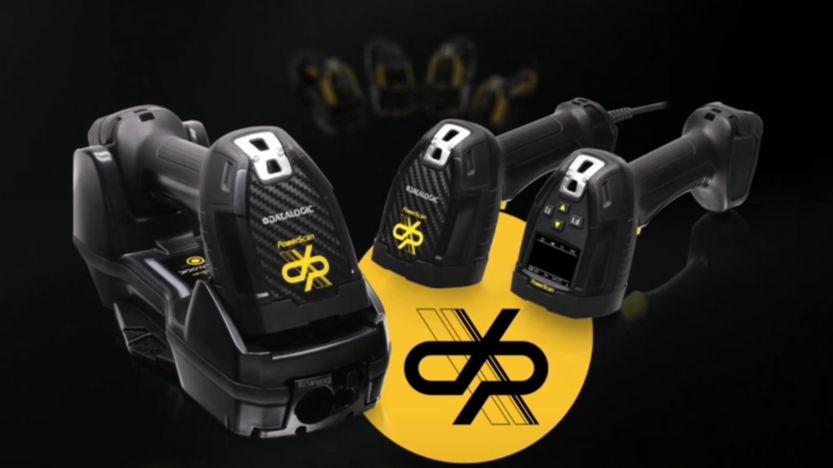Datalogic Introduces PowerScan 9600 DPX Scanners for Improved Traceability
Datalogic has released a new series of industrial handheld scanners designed to improve supply chain traceability via its ability to read difficult or damaged barcodes marked directly on a part’s surface.
For over fifty years, Datalogic has been a global leader in supplying manufacturing and factory automation industries with data-capturing devices such as barcode readers, mobile computers, RFID, vision, and laser marking. These devices are crucial when tracking materials or parts through factories. Adding to its portfolio, Datalogic has released a robust handheld scanner for traceability solutions, especially where Direct Part Marking (DPM) applications are concerned.

DPM involves using pin stamping or a laser to mark 2D barcodes on a part directly. Image modified and used courtesy of Cognex
Direct Part Marking (DPM)
DPM is a process often used in automotive manufacturing where 2D barcodes are marked directly on a part. This process is commonly done on metal parts but can also be found on plastic or molded parts. The method uses pin stamping or a laser to create a series of dots in a specific pattern, which results in a 2D barcode. The challenge with DPM is that the process is not always reliable and can result in unreadable marks due to a worn stylus or debris build-up on the part's surface. The PowerScan DPX is specifically designed to overcome these challenges.

The new PowerScan 9600 DPX Series is part of Datalogic's PowerScan 9600 Series of industrial handheld scanners. Image used courtesy of Datalogic
The Datalogic PowerScan 9600 DPX Series
Like other industrial handheld scanners on the market, the PowerScan 9600 DPX Series can read many different 2D barcodes and communicate over various Ethernet protocols to PCs, tablets, or PLCs. What sets the new PowerScan DPX Series apart from other scanners is DataLogic’s DPX 4D autolearning system. The autolearning system uses onboard sensors to detect reflection, color, and inclination, then feeds this information to special decoding algorithms to adjust acquisition parameters. This results in fewer false reads from the scanner with the goal of increasing productivity.
Future-proof, Rugged, and Reliable
Communication protocols are always evolving, and one way that DataLogic has future-proofed its new PowerScan device is by allowing users to install different communication modules into the base station. This feature enables standardization for equipment builders without limiting communication options to their customers.
When selecting equipment to be used on the factory floor, a product's durability and reliability are always important considerations. The DPX series can withstand a 2.5 m drop, is IP65 and IP67 rated, and can be used in harsh conditions. The DPX series uses a STAR RADIO system, Bluetooth connectivity technology, a wireless charging station, and smart batteries that monitor and display the device's health.
The DPX series comes in three main models: a corded desktop model, a wireless model using Datalogics STAR 433 MHz system with an optional keypad/display, and a Bluetooth 5.0 model. Each model can have USB, Ethernet, EtherNet/IP, or ProfiNet communication modules installed anytime, allowing end users to stay flexible with their communication choices.

The PowerScan 9600 DPX Series is designed to improve product traceability across industries. Image used courtesy of Datalogic
Supply Chain Traceability
Automotive parts are manufactured in many different locations all around the world. A truck assembled in Mexico might have parts made in Brazil, Canada, or China. All of these parts need to be tracked throughout the manufacturing process. Barcodes are a great way to track these parts, and they are commonly printed directly on parts, as a label might get damaged or fall off.
Scanning a part's barcode allows any operator to be shown information associated with that part. With a wireless scanner designed to read damaged and difficult-to-read codes, like Datalogic's PowerScan 9600 DPX Series industrial handheld scanners, operators don't have to struggle with nearly unreadable barcodes, and parts will not be wasted.






